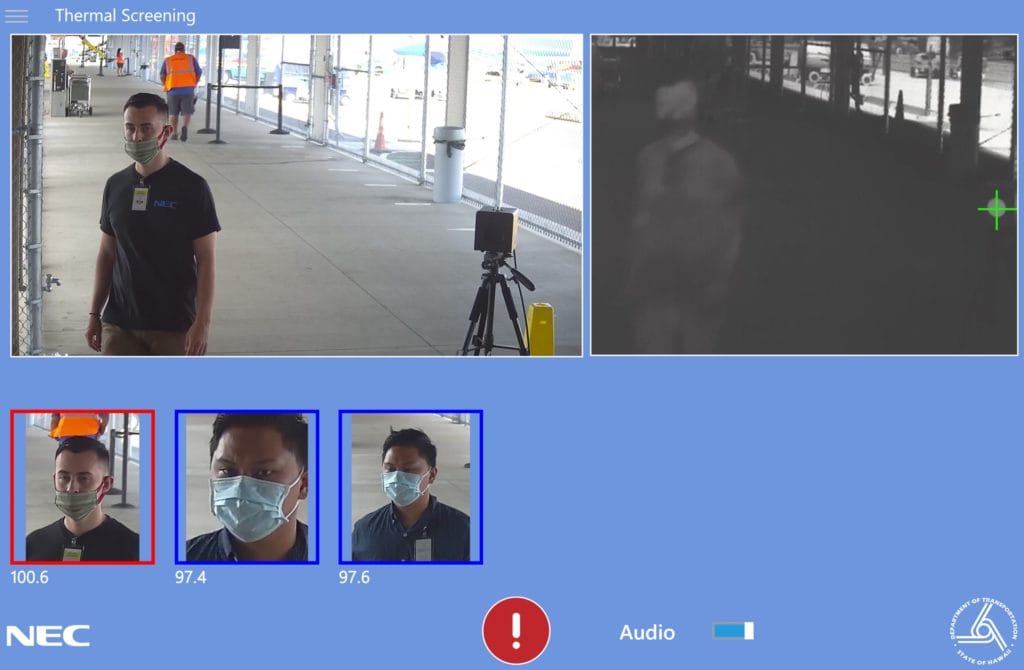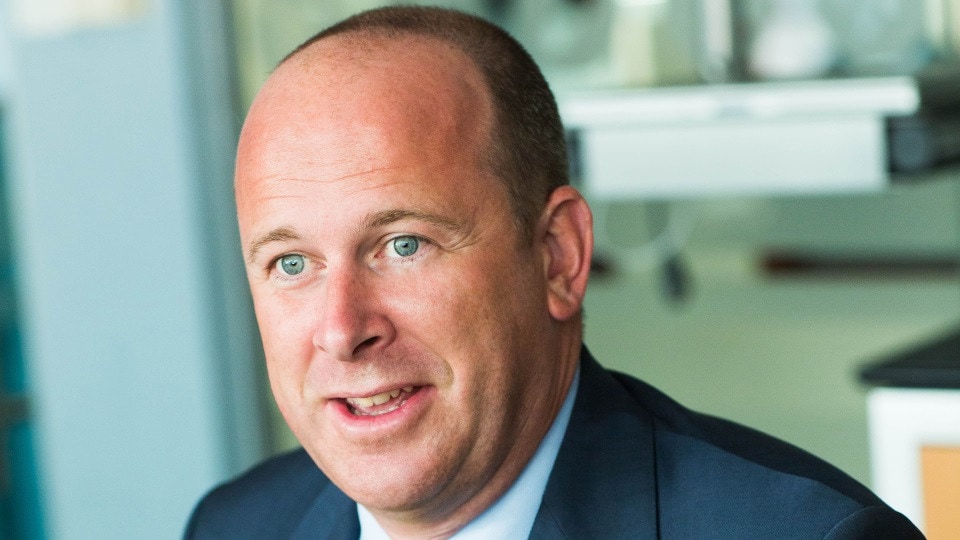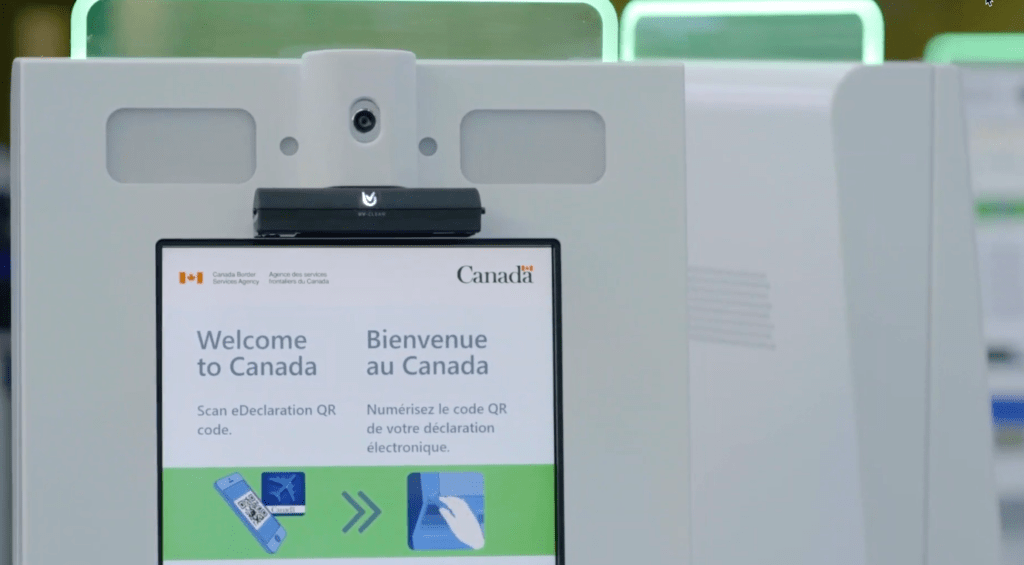Suggested Viewing: FTE APEX Virtual Expo’s OnDemand Speaker Zone
Share

APEX Media director Maryann Simson highlights the best of the best in the OnDemand Speaker Zone at FTE APEX Virtual Expo. This article originally appeared in Expo Daily Experience. Read the full issues and register for FTE APEX Virtual Expo — the platform will remain open as a resource until January 8.
Aloha Automated Screening!
NEC & HAWAII DEPARTMENT OF TRANSPORTATION

Hawaii has been hit hard by the pandemic and its associated travel restrictions. Even when air travel came back online, capacity remained very low. This was largely due to the slowdown caused by enhanced passenger screening measures. In particular, manual thermal screening required a lot of extra on-the-ground resources and arriving travelers were stuck waiting for their turn on sweltering jet bridges. This also affected the turnaround times for airlines.
In response, the Hawaii Department of Transportation Airports Division turned to NEC Corporation of America to implement hygienic, contactless thermal screening, says Bill Carleton, the company’s senior program manager, Aviation. Its team deployed a contactless thermal imaging solution across five major airports, including integrated face imaging and detection of body temperature above 100.4 degrees Fahrenheit, so that those persons can be called aside for additional screening.
“The solution was developed with a ‘security by design, and privacy by design’ approach, allowing it to easily integrate with the Hawaii Department of Transportation’s operational and security processes for the pandemic,” says Carleton. “The system can detect persons wearing masks covering their mouth and nose as many travelers are now required to wear a mask for safe travel.”
Virtual Expo Connection – Event Agenda
Catch it on-demand: How does the Hawaii Department of Transportation provide a safer, more hygienic travel experience during the COVID-19 pandemic?
Uniform Transparency
ALASKA AIRLINES

Alaska Airlines’ director, Guest Product Delivery, Amber Simonsen takes us back to the early days of the pandemic, outlining how her team went from a place of creation and enhancing the guest experience to the less comfortable place of “daily firefighting.”
Alaska Airlines had been planning to roll out a new uniform design for years, with an official release date set for March 18, 2020. But just a few days before launch, the world went into lockdown. After much agonizing and discussions with employee unions, the airline decided that the planned celebration over the launch was just not appropriate, given the severity of the unfolding pandemic.
The airline’s senior vice-president sent a letter to employees to explain the decision. “The letter was filled with transparency, candor and optimism,” Simonsen explains. “… it was a moment of really inspiring leadership that I’ll always remember. It’s okay to change course, but it must be done with humility and empathy to be well received.”
This is a “feel-good” presentation but beyond that is galvanizing to anyone working in branding or those who have encountered disappointing project setbacks just as they approached the finish line.
Virtual Expo Connection – Event Agenda
Catch it on-demand: Product launches and the pandemic: How Alaska Airlines pivoted the day of travel guest experience with unique products that continued to delight flyers and support employees
Enduring Interiors
CAPA – CENTRE FOR AVIATION

What solutions devised to reassure passengers about cabin interiors are most likely to be implemented and provide long-term value for airlines? Kai-Chin Shih, head of Interiors Research at CAPA Centre for Aviation, uses a grid borrowed from consulting firm McKinsey to assess various solution groups, including extra sanitization, hardware modification and digitization. Spoiler alert: the outlook isn’t favorable for physical segregation and airflow concepts that require certification and costly modifications; costs would trickle downto the consumer, who is likely to be price sensitive for the foreseeable future.
“It’s worth mentioning that out of all the solutions proposed during COVID-19, the only ones that airlines have signed up for are related to sanitization, as well as in-flight mobile phone and tablet usage,” says Shih. Sanitation initiatives might dwindle after COVID if demand for intensive cleaning subsides but “there is one thing I’m sure we’ll see stick around: the support for personal electronic devices,” he adds.
Virtual Expo Connection – Event Agenda
Catch it on-demand: State of the Aircraft Interiors and IFC market
Adapting Priorities
JETBLUE TECHNOLOGY VENTURES

Amy Burr, managing director, Operations and Partnerships at JetBlue Technology Ventures reveals the key industry areas where the venture fund is looking to invest: the seamless customer journey; next-gen operational and enterprise technology; the accommodation experience; loyalty distribution and revenue innovation; and sustainable travel.
Burr also shares how the company is helping its startup partners navigate through the current crisis, how “innovation sprints” accelerate the development of great solutions and whyproof-of-concept is so critical for new ideas.
Want to know what JetBlue Technology Ventures sees in the crystal ball for post-COVID travel? Watch this one right to the end for insights into contactless tech, biometrics, personalized experiences and digital identity.
Virtual Expo Connection – Event Agenda
Catch it on-demand: How JetBlue Technology Ventures has adapted its priorities and the way it works with startups, scaleups and other industry stakeholders in response to the ongoing COVID-19 crisis
The Antifragile Brand
SIMPLIFLYING

SimpliFlying CEO and airline marketing guru Shashank Nigam takes us out of the boardroom (or home office) into a verdant landscape flanked by mountains in the background for an entertaining presentation that’s about brand resilience.
Using a whiteboard and props ranging from balloons to rocks (plus an unfortunate egg) Nigam explains his definition of an “antifragile” brand and how it is created through transformational thinking and a galvanizing culture.
Tune in for insight into how airlines and industry-connected brands are coping with the pandemic in different ways, from staunch preservation (think Porter Airlines in Toronto and Lufthansa Group), to a focus on growth (Wizz Air in Europe and Qatar Airways), and of course, the holy grail of transformation, Air Asia and Express Spa, which went from offering pre-flight massages to rapid COVID tests.
Essentially, you want to be the rock; not the egg.
Virtual Expo Connection – Event Agenda
Catch it on-demand: The antifragile brand – How aviation can fly to a stronger post-crisis future
Cleared for Relaunch
OneWeb

After filing for Chapter 11 bankruptcy protection in March, telecommunications firm OneWeb has been resurrected with support from India’s Bharti Enterprises and the UK government. This has allowed it to proceed with its launch program. Its low-Earth-orbit (LEO) constellation, comprised of 588 satellites and 60 in-orbit spares, is slated to blast off in mid-December. In this video, OneWeb’s vice-president, Mobility Services, Ben Griffin outlines the firm’s progress and how it plans to support connectivity in aviation.
“It’s really about seamless pole-to-pole coverage and the way our work is put together really ensures we can cover all those places with tons of capacity and performance.” says Griffin. “Low latency is so important, especially as the world moves toward 5G and 5G applications that really demand low latency. It’s going to become more and more important to have this available to passengers everywhere.”
Virtual Expo Connection – Event Agenda
Catch it on-demand: Bringing in-flight connectivity up to speed
Innovation in the Cardboard
YVR

Vancouver International Airport doesn’t just develop technology to support its own operations, it also sells this tech to other airports under the banner Innovative Travel Solutions. Its automated border control kiosk BorderXpress, for example, can currently be found in 45 locations around the world.
When the pandemic caused airports to prioritize hygiene across all passenger touchpoints, YVR began a retrofit of these kiosks in April to enable gesture-based controls and automatic sanitation of the screens and keypads with UVC light after every use.
The adapted kiosk, which has been in use since August, has been well-received by passengers, says Lynette DuJohn, the airport’s vice-president, Innovation, and chief technology officer. DuJohn uses part of her presentation to delve into some of YVR’s design process, which is refreshingly lo-fi.
“When we want to see something in a physical, tangible way, we actually have some cardboard mock-ups built to the exact specifications that have been rendered by the design firm,” DuJohn explains. “Using cardboard lets us inexpensively and quickly prototype physical form, giving the whole team here a really good feel for what we’re building.”
Virtual Expo Connection – Event Agenda
Catch it on-demand: How YVR has continued to embrace innovation amidst the global coronavirus crisis


